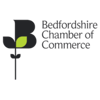Just as good cash flow keeps a business afloat, poor cash flow can sink it. Poor cash flow is a big reason why one in every four businesses don’t make it past the first year. And why more than half don’t survive past the fifth.
In this article, EFM will explain what cash flow is, and explain some of the common cash flow problems SMEs face and the solutions to help resolve your cash flow woes.
What Is Cash Flow?
Cash flow is money flowing in and out of a business. It is usually measured over set periods of time such as monthly, quarterly or annually.
Cash comes in from customers or clients who are buying your products or services. If customers don’t pay at the time of supply or goods/services, some of your available cash flow is tied up awaiting cash inflows from customers.
Cash goes out of your business in the form of payments for expenses, like rent or a mortgage, in monthly loan payments, and in payments for taxes.
Common Cash Flow Problems
- Disorganised Accounting Records
Lots of small business owners put their bookkeeping to one side because they’re so busy with the work load of setting up and running a business. That’s understandable, but if the books aren’t organised, troubling times lie ahead.
When a company starts to fall behind with processing their bills, red letters and demands will follow, and business owners can be left feeling out of control despite being busy fulfilling customer sales.
By approaching an outsourced finance team, your company benefits from a specialist looking at the company’s invoicing system and methods of collecting payment from customers. Some of the problem areas that can be found in situations like this point to inconsistent invoice numbering, and no proper record of which customers had paid.
The external finance specialist can spend time reconciling the overlooked invoices to properly determine what money the company is owed by customers and what payments are due to suppliers. The specialist can then spend time helping the business owner install an efficient and robust system in place, meaning a stronger cash flow and no more red letters.
For most businesses, the only real way to get the books in order is to use an accounting system and keeping it up to date. The advent of Making Tax Digital means that all businesses must use appropriate accounting software and the external finance specialist can provide advice as to the most appropriate accounting software to use.
Once your books are in good order, you’ll be able to stay on top of how much each customer owes you. You and/or your outsourced specialist will also be to generate useful reports so that you can understand your cash flow much more easily.
- Ignored Credit Terms
If the credit terms you have set your customers are out of sync with the credit terms set by your suppliers, negative cash flow can build up and worsen over time. For example, if your customers have 30 days to pay you, but your suppliers want to be paid within 14 days, a cash flow problem may build up.
The best solution in this situation would be to renegotiate terms with your customers and/or suppliers. But sometimes this isn’t immediately possible. In cases like these, there are some measures that you can set in motion:
- Factoring: This is where a financial institution lends your business short-term cash that is secured against the value of the invoices you have issued.
- Early Settlement Discounts: You could offer early settlement discounts on your invoices which will give your customers a financial incentive to pay you early.
Many service supplying businesses do their customer invoicing at the end of the month, meaning that on standard 30 day terms, they are under pressure to receive funds at the end of the next month to ensure major payments like wages are met. If business is billed throughout the month then these month end cash flow pressures will be eased.
- Bad Debts
Bad debts can be crippling for a small business and can easily occur if a proper credit control system is not put in place early on. A credit control system is the process a business uses to collect money owed by its customers. It is essential that you set up a thorough credit control system when starting up a business. If your business keeps good books, then creating a credit control system can be very straightforward.
To reduce the likelihood of bad debts, it’s wise to conduct credit checks on your customers before offering them credit. For example, if you discover a customer with a poor credit record, and you want to take them on as a client, you can ask for a deposit or full payment up front or issue partial invoices they can pay in stages.
- Lack of Profit
Naturally, lack of profit will lead to a lack of cash. Ultimately, no business can sustain losses indefinitely.
Businesses with cash reserves from previous profits or cash injections can survive without profit for a while. But a consistent length of time bearing losses will eventually catch up to you, regardless of how small or large your cash reserves.
If your business is losing cash, it’s essential to uncover the cause of any losses and address them as soon as possible. Possible solutions to becoming profitable may be to increase your prices, increase sales or gain better control over your expenditure.
- Inadequate Forecasting
A cash flow forecast is essential for all businesses. An outsourced finance expert can create and manage an easy to understand cash flow forecast on your behalf.
With a cash flow forecast, you’ll be able to see which months you can expect to see a cash shortfall, and which months you can expect a surplus. You’ll also be able to get a pretty good idea of how much cash your business is going to require over the next year or so to survive.
You can gain a lot of insight into your business by comparing actual figures to what you forecasted. If you see discrepancies between the two numbers, dig further to see what might be happening.
On finding discrepancies, you can adjust your forecasts so they are more accurate going forward.
A cash-flow forecast is also a great resource to help you make important decisions, such as when to make a capital expenditure, or whether or not to cut an expense.
- Rapid Growth
Most business owners want to grow their companies, but sometimes growing too quickly can cause cash flow issues that can hurt the business.
Take this business owner as an example. He landed a big client who wanted a large project completing within 12 months. In order to fulfill this request, the contractor would have needed an extra 4 members of staff to deliver the project on time.
He immediately took on the extra staff members he needed. When it came to payday, however, he could not cover their wages, as he had not yet received his first payment from the new client.
To fix this kind of problem, you could access a line of credit from the bank, such as an overdraft or short-term loan. In many cases, this is a viable option because banks are more willing to lend to a business if they can see a draft service contract or letter of intent.
Once the client pays you, you can pay down your debt. This means that you only pay interest to the bank for the amount of time you actually need the cash.
Talk to EFM
To ensure your company is not leaking cash and to maintain a strong cash flow, it’s important to approach an experienced finance specialist for a consultation assessment around your current business state. EFM can help to ensure your business’ cash flow remains secure and develop a robust forecasting model to warn you of any potential red marks in your accounts.
To find out more around our cashflow management service, contact the EFM team via email or call 01582 516300 to arrange your free one hour consultation with one of our EFM Experts.




![The Bedford College Group logo [WHITE]](https://www.chamber-business.com/hs-fs/hubfs/The%20Bedford%20College%20Group%20logo%20%5BWHITE%5D.png?width=139&height=81&name=The%20Bedford%20College%20Group%20logo%20%5BWHITE%5D.png)
